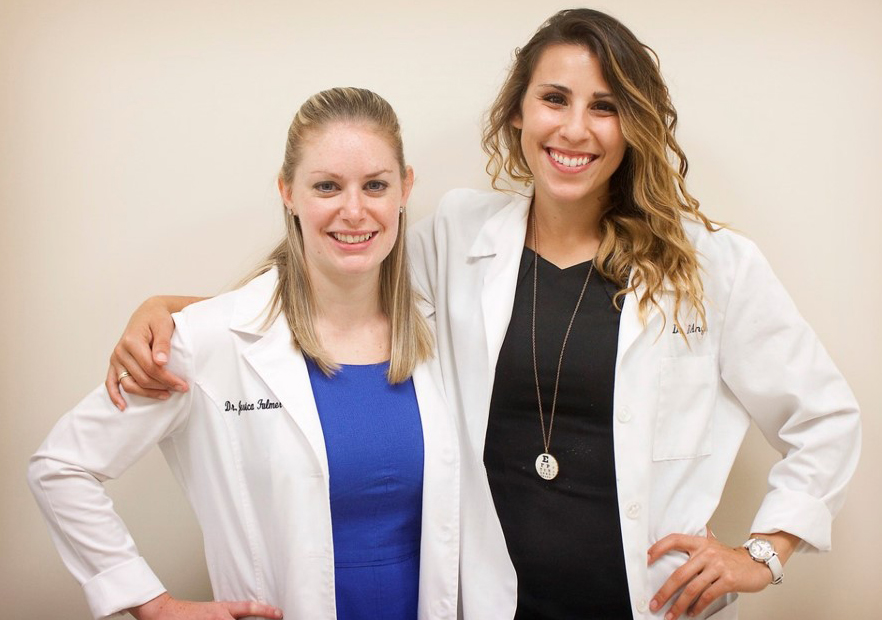
By Miki Lyn Zilnicki, OD, FCOVD,
and Jessica Licausi, OD, FAAO, FCOVD
Jan. 12, 2022
Building relationships with other healthcare practitioners in your community can help you grow niche services. We used these connections to other providers to launch and grow a vision therapy-focused practice.
These referral relationships are responsible for about 75 percent of patients who walk through our doors (the other 25 percent is made up of patients independently finding us or finding us through their insurance).
Here is how we established, and continue to grow, these relationships.
Making Referral Relationships Central to Your Business Plan
Forming relationships with other healthcare practitioners in our community is a critical piece of our business model since we are a specialty practice that is primarily referral based. We currently have about 15 strong, consistent relationships with providers who refer patients to us on a regular basis. These strong referral sources send us on average 2-4 new vision therapy evaluations every month.
Our two biggest, and most consistent, referral sources to our office are an orthopedic group that specializes in head injuries/concussions and a neurology practice. A large proportion of our referrals are for co-management of patients suffering from post-concussion syndrome who have significant and persistent visual symptoms.
We have also built wonderful relationships with a few local ophthalmologists, a chiropractor, pediatricians, occupational therapists, physical therapists and other optometrists that do not provide vision therapy services, as well as some school districts that have identified how important vision is to learning. Schools sometimes refer strabismus/amblyopia patients to us, along with children who failed a school or pediatric screening, and sometimes those who are just struggling in school.
The ROI of Referral Relationships
Taking our 15 strong referral sources mentioned earlier, and calculating that they refer an average of three patients per month for a vision therapy evaluation, that translates to 540 new patients/year and ~$108,000 of income per year. If two out of those three patients follow through with vision therapy services, factoring in an average vision therapy program length of 24 sessions total, that equals out to $1,110,000 of income for the year. Now, this is a rough estimate as referrals wax and wane throughout the year, and every vision therapy program is unique to the patient and can vary in length. But that gives you an idea at least of what our referral relationships mean to our practice financially.
Meeting the Providers Who Will Be Central to Your Growth
When we first opened the office, we went and met as many local providers as possible face-to-face to discuss what we specialized in and what services we provided. We also did a lot of education in the form of in-services.
The orthopedic group that has become one of our biggest referral sources was one of the hardest to get in with. We called them monthly when we first opened offering to come and meet them with no success. After about six months, we got our first referral from them. Immediately following the patient’s appointment, a report was written and faxed back to them. About two days later we had a call from the head of the clinic to set up an appointment to meet. It was a turning point in the relationship and a lesson to continue to be persistent when you know that your services can benefit another provider’s patients!
We have an informational packet detailing how to identify patients who may be struggling with visual issues by both objective signs and common symptoms and complaints from the patient. We also give business cards and referral pads to these providers.
Other Articles to Explore
Getting Support from Staff to Grow Referrals
Our patient care coordinator is essential in helping to co-manage our patients. She is the initial point person when patients call the office to set up their appointment. She sets up their initial telemedicine appointment to review case history, their vision therapy evaluation and then handles scheduling all of their vision therapy sessions and re-evaluations. Additionally, she is responsible for sending out all reports and correspondence with the referring providers. She is a critical piece to the success of our relationships and keeping things running smoothly.
Often the patient will call and explain that they have been referred for a vision therapy evaluation by their provider, and they get set up with an appointment. Our intake forms give the patient the opportunity to help us understand their case, who is referring them and why. We can delve further into their history during our pre-visit telemedicine appointment. We typically don’t need to ask for much from the referring provider directly. If any further pertinent details are needed, we request additional records from the referring provider. Our largest referral source, a concussion clinic, utilizes an online portal that automatically sends us the records for anyone they are referring to us.
Communicate with Referring Providers After You See Patients
Following the evaluation, we write a formal report about the patient detailing their findings, diagnosis and treatment plan. We also include a chart comparing their findings versus normative values to make it easy for the provider (and patient) to understand what the findings mean. This is time consuming, but we have found that just sending over our electronic health records can be confusing to read as a non-optometrist. In addition to that initial visit, we also correspond with the referring provider at every re-evaluation to keep them abreast of the patient’s care and progress.
Let Referring Providers Know You Appreciate Them
Our approach to these relationships, of taking the time and effort to connect and communicate effectively, has helped us grow wonderful referral relationships that keep new patients coming in the door.
One way that we like to show our appreciation to our referral sources is to always connect during the holiday season and send a gift basket to their offices. We also make sure our doors, e-mail and phone lines are always open to allow for timely communication regarding mutual patients. Our biggest tip is that an open line of communication is always recognized and appreciated, and has been our most effective method for growing these relationships.
Fostering these relationships has allowed us to grow and flourish over the past 6.5 years with the need for two additional vision therapists to help see patients.
 Miki Lyn Zilnicki, OD, FCOVD, and Jessica
Miki Lyn Zilnicki, OD, FCOVD, and Jessica
Licausi, OD, FAAO, FCOVD, are co-owners of Twin Forks Optometry and Vision Therapy in Riverhead, NY.
To contact Dr. Zilnicki: DrZilnicki@twinforksoptometry.com.
To contact Dr. Licausi: DrLicausi@twinforksoptometry.com

























